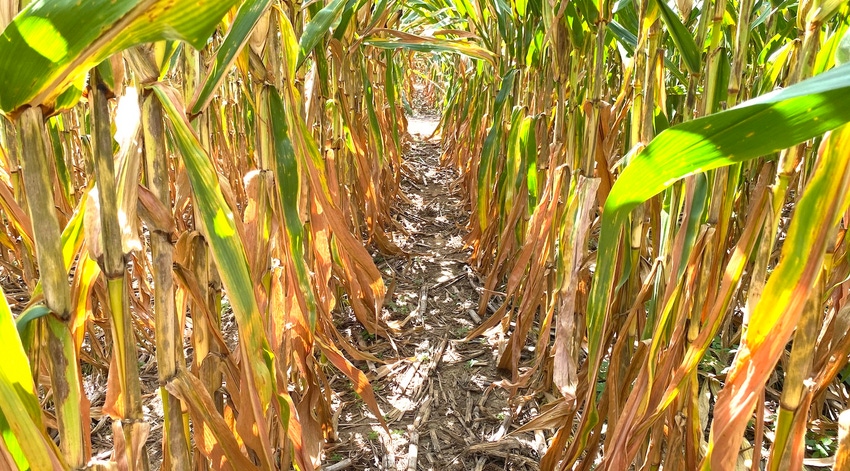
It’s a question Terry Spurlock, plant pathologist with the University of Arkansas System Division of Agriculture, says he’s been asked quite a bit. As planting season ramps up, many growers are hopeful the frigid temperatures from a few weeks back will take care of the diseases that typically infest their crops.
Unfortunately, Arkansas corn growers should not expect a reprieve based on cold temperatures alone.
“The cold snap will probably not have much of an impact on our disease pressure,” said Spurlock, who specializes in disease management in Arkansas grain crops, “because the foliar disease we’re most concerned with in Arkansas corn is southern rust, which has to be blown in from the South. Typically, our southern rust pressure is not dictated by what kind of winter we have, but instead what kind of spring we have. If we have favorable spring weather and can plant on time, we can typically outrun potentially damaging southern rust.”
Nematodes
Don’t expect the cold snap to provide much help with nematode pressure, either, according to Spurlock’s counterpart in the University of Arkansas’ Department of Entomology and Plant Pathology.
“Often when we have a very cold winter, the nematodes go further into the soil profile, but that doesn’t mean you eliminate them 100 percent,” Faske said. “If you plant something susceptible, by the reproductive stage the nematodes will be visible on the root system and causing damage.”
Faske, who specializes in root knot nematodes, said these pests typically find the “sweet spot” in the soil where they can best survive. While the February freeze may have killed a few nematodes residing in more shallow soil areas, it was not enough to dramatically drop populations.
“A grower’s nematode populations are going to depend on what sort of host he plants. Corn is a great host and will cause populations to increase. Planting a resistant crop or a non-host, like peanuts, is a grower’s best option.”
Row crop pests
When it comes to pest pressure, U of A experts say insects native to the area would have a better chance of surviving the winter than invasives from warmer climates.
In a recent press release, Ben Thrash, Extension entomologist for the Division of Agriculture said, “We can safely say the redbanded stink bugs and southern green stink bugs will be knocked back for the next several years. I think many of our native species will be relatively unaffected.”

However, the cold’s effects on insects that migrate to Arkansas isn’t known yet. “Insects like corn earworm and fall armyworms do overwinter here Arkansas, the cold should have killed them here, but many of our most damaging corn earworm populations migrate from places like the lower Rio Grande Valley in Texas and south Louisiana,” Thrash said. “I’d bet we will still see these insects, but they may just be delayed in getting here.”
Fire ants
“Imported fire ants are a good example of an exotic species that can be adversely impacted by extreme cold temperatures,” said Kelly Loftin, Extension entomologist for the Division of Agriculture. “This pest ant has expanded its range about as far north as it can under normal winter conditions. And north Arkansas is the northern limit of its range.
“Although imported fire ants are native to South America, they survive most Arkansas winters,” Loftin was quoted in a university press release. “However sustained cold can cause a temporary population reduction.”
He said that a decade ago, when parts of the state sustained seven days below freezing, “Arkansas’ fire ant population experienced a 70 percent reduction in the number of fire ant colonies.”
But you can’t keep fire ants down for long.
“About 1.5 years later, fire ants returned to the prior population level,” he said. “Fire ant colonies associated with sidewalks, parking lots, foundations, and other areas tend to survive simply because these structures serve as heat sumps thus preventing colonies from freezing.”
Watch and wait
Even though extreme winter weather may have a variable impact on 2021 disease and insect pressure, keeping up with weather forecasts is a critical step in an integrated pest management program.
“Even though there are diseases that are fairly consistent, you get something a little different every year,” Spurlock said. “I stress to growers that the best thing to do is scout and always pay attention to what the weather’s doing at the present and what the weather is forecasted to do in the future relative to the growth stage of your crop.”
“We can’t predict disease development this far out, but we can have a plan to be prepared.”
About the Author(s)
You May Also Like






